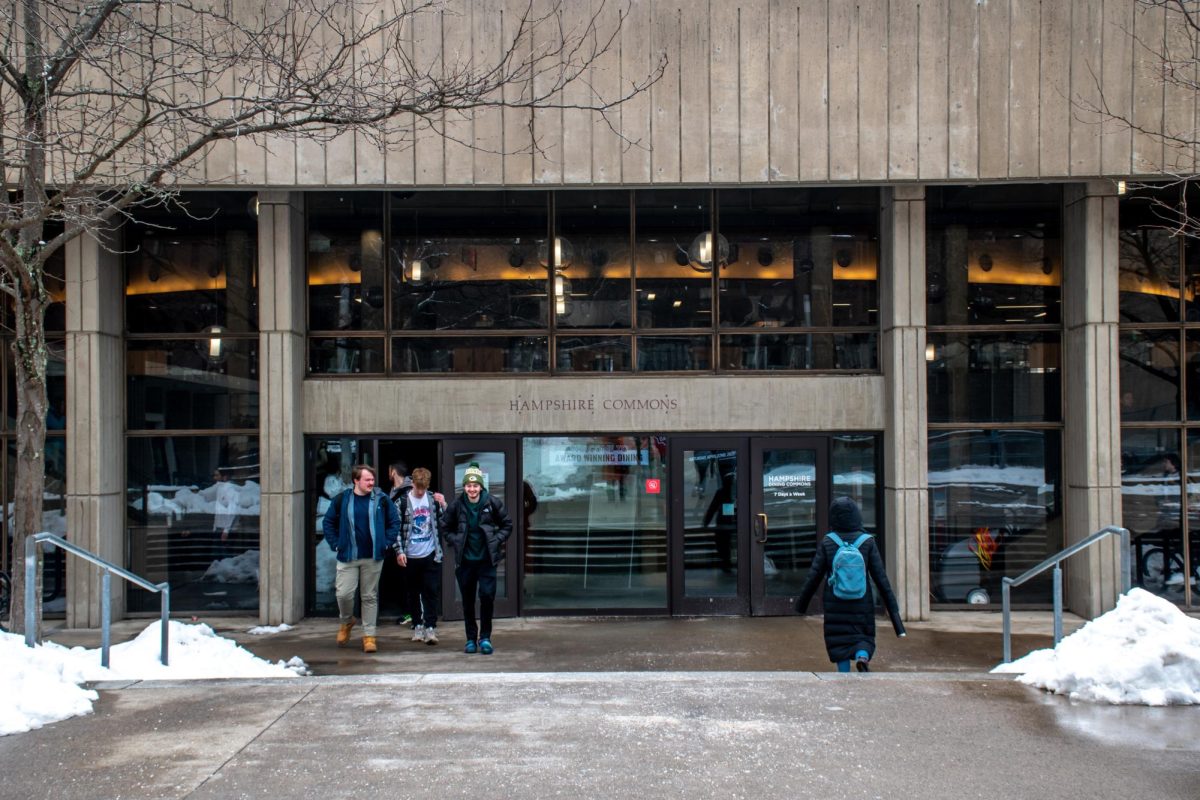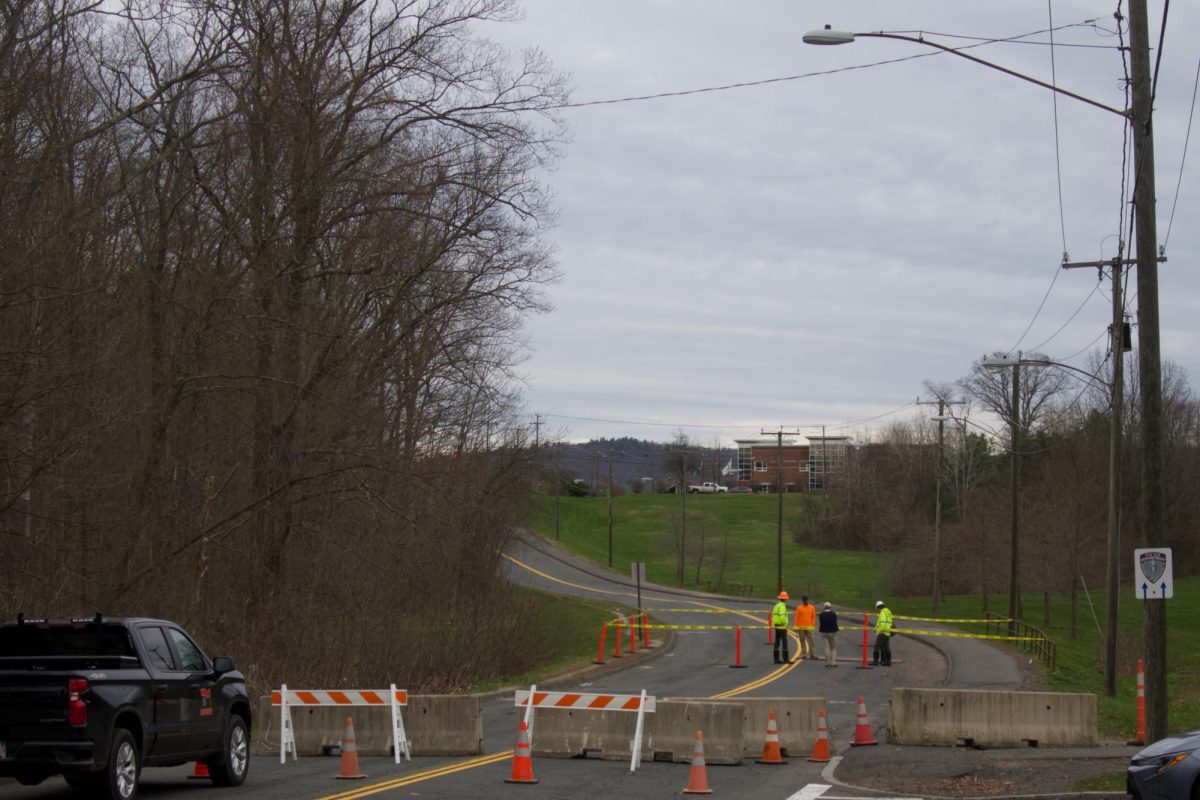
Wilmore Webley, a professor of microbiology at the University of Massachusetts and an infectious disease expert, moderated a discussion panel on the current Ebola outbreak on Tuesday to inform the public of the virus.
According to the Centers for Disease Control and Prevention, Ebola is a virus that takes anywhere from 2 to 21 days to show symptoms in an infected person. However, it can only be contracted through bodily fluids.
The CDC has reported that there were about 4,922 deaths from Ebola since patient zero, a toddler in Guinea. The CDC director, Dr. Tom Frieden, described the outbreak “unlike anything since the emergence of HIV/AIDS.”
“We hope that by the end of the panel you will leave with a better understanding of where the virus came from, a greater appreciation of our health care system, a better picture of global health and global community, and what this all means,” Webley said.
Multiple experts joined the discussion to answer questions about the Ebola virus, and to share their perspective about the causes, prevention and future outlook of this epidemic.
The first panelist to speak was Martha Anker from the UMass School of Public Health and Health Sciences and former employee of the World Health Organization. She worked on treating Ebola patients in previous years.
Anker started by addressing the differences between the current and previous Ebola outbreaks, and why this one is deadlier than all the past ones combined. According to Anker, one of the biggest factors that contributed to the fast spread of the virus was the long length of time it took to be identified. Health officials did not have any suspicion that it was Ebola, and they assumed it was a type of hemorrhagic fever.
“If these countries had a good health care system, the identification process would have been more efficient. In this case, the organizations relied solely on their epidemic intelligence service technologies,” Anker said, regarding the criticism that the CDC and WHO received about how fast they acted.
Anker described epidemic intelligence as a system based on computer based data reports by medical workers about any possible outbreak event, which may be complex and hard to interpret.
The second panelist was Alpha Kabinet Kaba, a Guinea native dance instructor, whose family was deeply affected by the virus and who shared personal insight about the town of Meliandou, the village where the outbreak originated.
“It’s a small village,” he said. “When people are sick they go to the medicine man, they don’t know much about doctors. And in the city, medical centers don’t have a way to test for it.”
The next speaker was Donna Gallagher, founding coordinator of the UMass Medical School Office of Global Heath. Gallagher has traveled to Liberia in the past doing volunteer work. According to Gallagher, the Ebola virus became especially lethal in this part of the world due to the shortage of basic sanitary equipment, such as surgical gloves.
She emphasized that the few isolated Ebola cases identified in the United States are what led to people paying attention to health care access discrepancies.
“This reminds us that whether we like it or not, we are connected to the whole world,” Gallagher said.
She also expressed her opinion on the New Jersey policy to place people traveling to the West African region into quarantine. According to her, this policy only obstructs the work done by organizations, making it undesirable for people to volunteer.
“Fortunately in Massachusetts, we have a different approach than states like New Jersey, which is the science approach,” she said.
Because Ebola is contagious when the patient presents symptoms, a conscious self-monitoring check during the first two weeks after the travelers return to their home country is believed to be enough to prevent the spreading of the virus.
The last speaker was Dr. George Corey, the executive director of University Health Services. He highlighted that the chance for the virus to become a problem for the Amherst community is close to zero, but the University is prepared. He also mentioned the high mortality rate of this viral strain in West Africa is mainly due to the lack of access to intensive treatment right away.
The last part of the panel consisted of a series of question and answer interactions between the panelists and the public, in which several concerns were cleared. Possible treatments for Ebola were mentioned, such as a vaccine which is currently in development, and ZMapp, an experimental drug created by a Californian biotech company. The panelists also expressed the unlikelihood for this epidemic to become a problem in this country, and the low risk of contraction from one patient to other.
Cecilia Prado can be reached at [email protected] followed on Twitter at @thececiliaprado.



















Caitlin • Oct 30, 2014 at 6:20 pm
It’s sad that only if the healthcare system involved when it surfaced in the first place was stronger and better equipped, it could have been cut off and it would have disappeared. This is a very informative article with lots of good points I’m sure many people want to know about in the Ebola outbreak confusion.